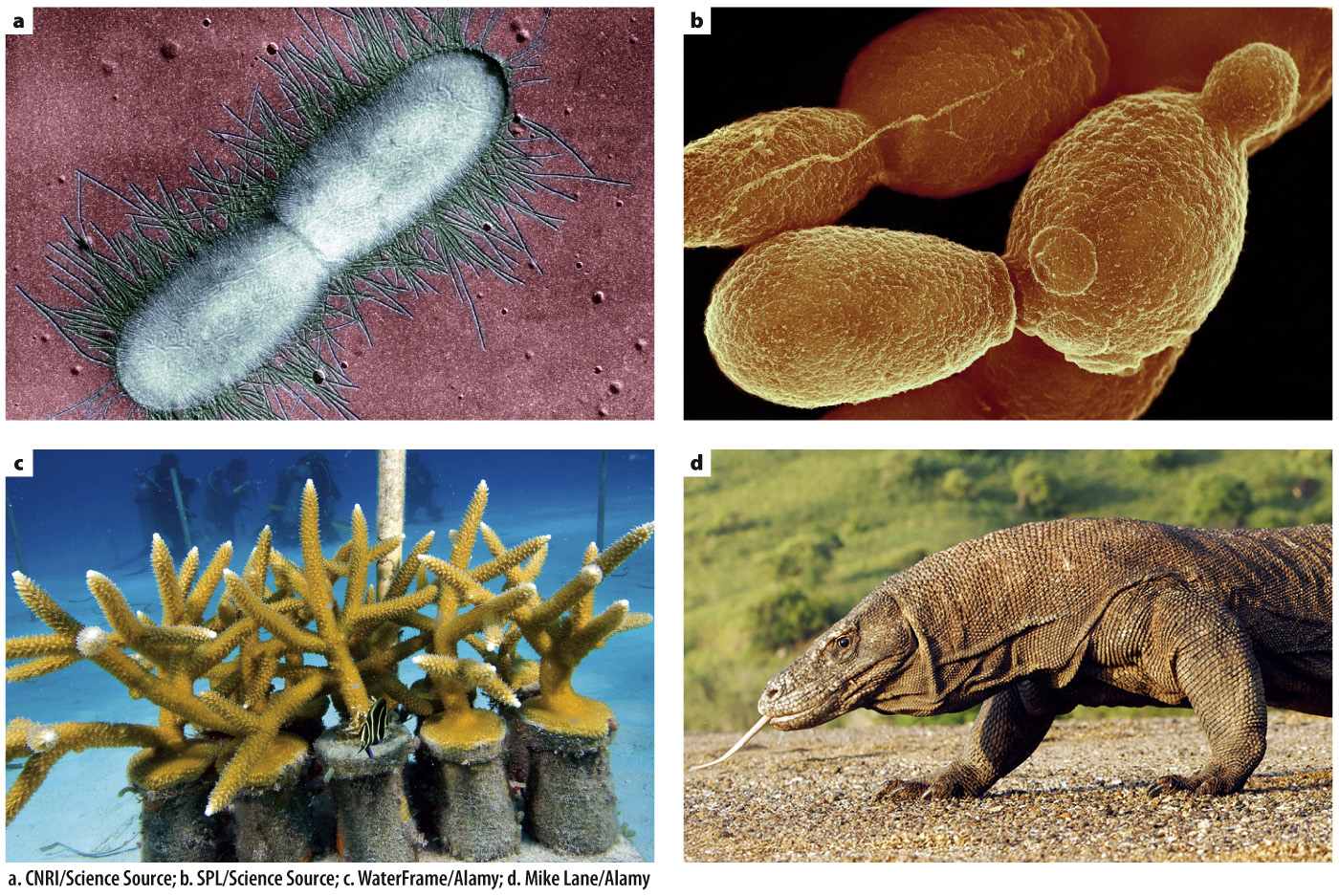Asexual reproduction produces clones.
Organisms have two potential ways to reproduce. One is the production of genetically identical cells or individuals called clones. This form of reproduction is called asexual reproduction, and it occurs in a wide variety of organisms (Fig. 42.1).

For example, bacteria (Fig. 42.1a) and archaeons reproduce by binary fission, a form of cell division in which the genome replicates and then the cell divides in two (Chapter 11). The result is two cells that are either identical to the parent cell or nearly identical, differing only because of chance mutations.
Prokaryotes can nevertheless increase genetic variation by horizontal gene transfer, as described in Chapter 26. For example, they can transfer DNA from one individual to another, usually of the same species, and much more rarely to an individual of another species, during conjugation. They can also obtain DNA directly from the environment and by viral infection, incorporating genes that might have evolved in even distantly related species. These processes allow prokaryotes to acquire novel genetic sequences that can affect fitness.
Eukaryotic cells, on the other hand, divide by mitotic cell division (Chapter 11), a process that evolved early and was present in the common ancestor of all living eukaryotes. Mitotic cell division is a form of growth and development in all eukaryotes, and is the basis of asexual reproduction in many eukaryotes.
One form of asexual reproduction in fungi, plants, and some animals is budding, in which a bud, or protrusion, forms on an organism and eventually breaks off to form a new organism that is smaller than its parent. The budding yeast, Saccharomyces cerevisiae, which is used to make bread and beer, is so named because of its ability to produce new individuals by budding (Fig. 42.1b). Budding can also occur in animals such as the water-
Another form of asexual reproduction is fragmentation, in which new individuals arise asexually by the splitting of one organism into pieces, each of which develops into a new individual. Certain molds, algae, worms, sea stars, and corals can reproduce by fragmentation. Fragmentation occurs naturally, but humans can use this mode of reproduction to propagate corals in the restoration of coral reefs (Fig. 42.1c). Once again, the new individual is a clone of the parent.
A final example of asexual reproduction is parthenogenesis, literally “virgin birth.” In this form of asexual reproduction, females produce eggs that are not fertilized by males but divide by mitosis and develop into new individuals. Parthenogenesis explains why male bees don’t have fathers. It occurs in invertebrates, including some insects and crustaceans, as well as in vertebrates, including some fish and reptiles (Fig. 42.1d). The details of parthenogenesis differ depending on the organism. In most sexually reproducing animals, egg cells are usually the product of meiosis and are haploid, having one set of chromosomes. In some parthenogenic organisms, this haploid egg cell divides repeatedly by mitosis to become a haploid adult; in others, the DNA content doubles during development so the adult is diploid, having two sets of chromosomes; and in still others, the egg cell is not the product of meiosis (it is diploid) and divides by mitosis to become a diploid adult. In all cases, parthenogenesis involves a single maternal parent.